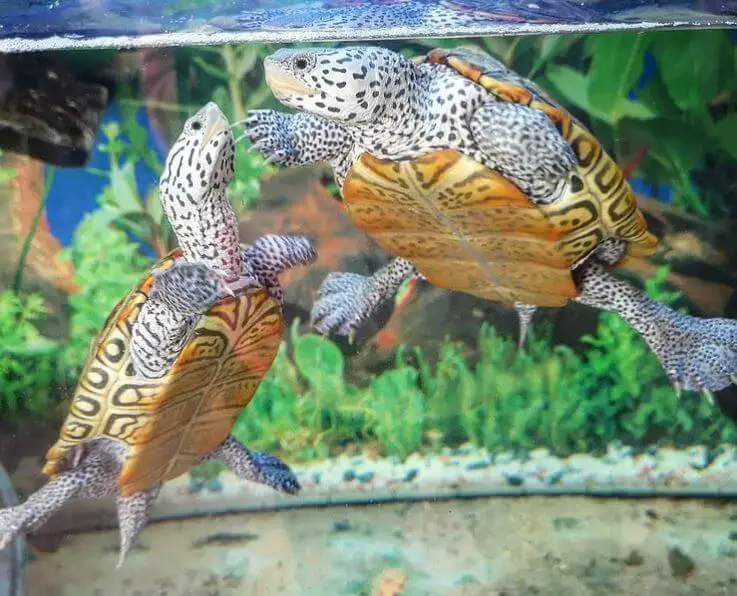Can you put sand in a turtle tank? The answer is yes and no.
Yes, if the tank has a filter that can handle it. No, if the turtles are going to be digging out of their basking area or into any other part of the enclosure where there may not be good filtration.
It’s important to remember that even if your turtle tank is filtered, over time, this will fill up with dirt and particles from all those tiny little claws kicking around on top of it!
Related Posts:
- Top 5 Turtle Substrate For Your Pet Tank
- How to Make UV Light for Turtles?
- Do Turtles Need Light 24 Hours a Day?
- Can Turtles Live in a Fish Tank Filled With Water?
- Can Turtles Eat Spider Plants?
Can You Put Sand in Your Turtle Tank?
Many turtle hobbyists like sand for their turtles, but you have to clean it before putting it in the tank.
In the wild, aquatic turtles live in various habitats from mudflats to rocky areas with interspersed vegetation and submerged trees.
These terrain types provide the natural substrate for many species of turtles including mud turtles, musk turtles, map turtles, spotted turtles, and cooters.
Box turtles are terrestrial animals but will occasionally get into the water to either drink it or get a quick dip when needed.
Thus, providing them with both land and water (aquatic) environments is beneficial to these species of terrapins.
When setting up an aquarium for your pet turtle, there are several choices available on the market for substrates.
- Aquarium gravel
- Aquatic turtle tank carpeting
- Various types of synthetic aquatic plants
- River rocks
- Washed beach sand from a local marina
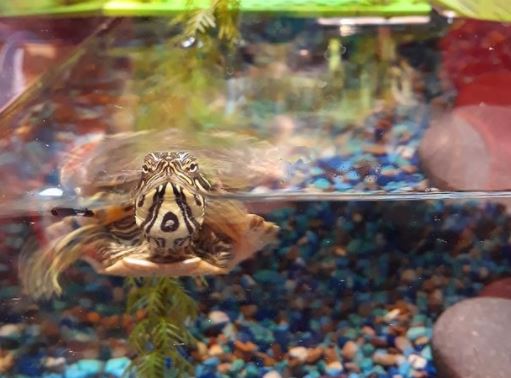
Is Sand or Gravel Better for Turtles?
Sand and gravel provide a safe place for turtles to dig and bask, but pet stores typically carry only one or the other. What’s the difference, and what’s best?
When I was a kid in grade school, our science fair project was always about turtles. We were (and still are) cheap labor and very easy to care for and feed: All they need is access to sunlight and water, with an occasional dead leaf or blade of grass.
The fertile minds of children everywhere have been brewing up new experiments ever since — we’re sure that you’ve heard about this before — we did it!
But it isn’t just kids who can get in on the fun. If you love your baby red-eared slider, you can do a project with him or her, too.
Sand and gravel both provide good basking spots for turtles, but there are some differences that might just give one material an edge over the other. Off we go into the wild world of turtle science!
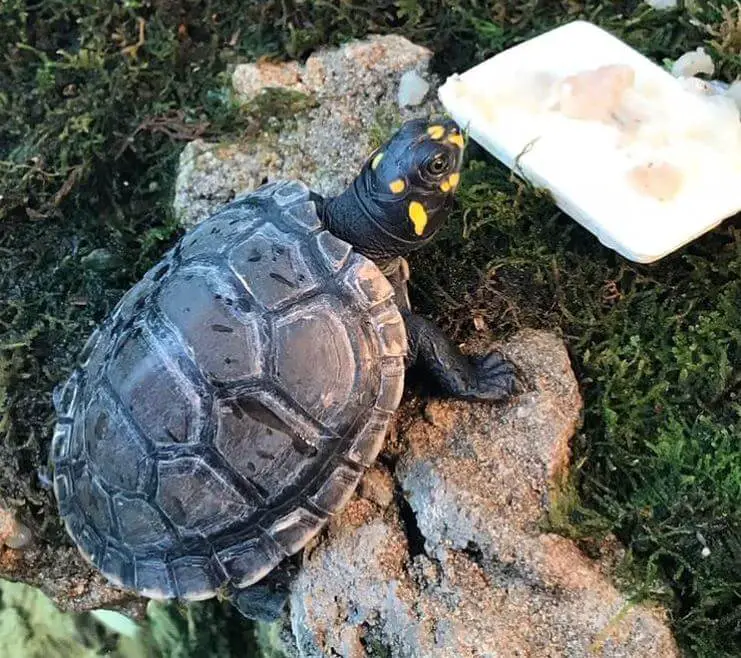
Let’s start with probably the most basic difference between sand and gravel: size.
In general, larger is better when it comes to gravel as a substrate because they stay in place better than its smaller counterparts, which may make digging harder for your pet.
Since turtles will be using these as basking areas rather than hiding places, consider how much room they have to comfortably stretch out on a flat surface — not all of our pets are created equal.
Another thing to keep in mind is that larger rocks may not be as easy to clean as finer gravel.
For those of you who want a little variety in your pet’s life, consider using a combination of both fine and coarse materials to create a multi-level basking site.
If the two types are kept separate from one another, they can also provide opportunities for exercise by forcing your turtle to dig or swim between them.
You could even use small sticks or pieces of driftwood if you have some lying around!
The nice thing about this is that it’s less work for you since you’re already cleaning once every few weeks anyway. Just remember to rinse everything off before putting it back into your tank.
Sand is typically made from disintegrated rock that has been compressed over time into finer and finer particles.
It is not sharp to the touch, but it can pack a punch when turtles decide to take a nap on top of it.
Since there’s no danger of cutting their skin with anything sharper than a leaf, they can dig deeper down into the sand if they feel inclined to do so, which you should allow them to do.
However, being able to dig deep may mean that your pet digs more often as well, so be prepared for lost or buried treasures!
What Kind of Sand to Use for a Turtle Tank?
The most important thing in a turtle tank is the substrate.
It’s not because of its beauty, but rather because it directly affects your pet: Turtles and tortoises (and snakes and lizards and other reptiles) love digging for their food in sand or soil.
This behavior is called “basking.” They like to take a little bit of sand in their mouth when they dig in order to make sure that they can breathe
That could be dangerous if you used normal aquarium gravels (sharp-edged rocks such as lava rock).
So always use sands that are safe for turtles!
Usually, sands sold for tortoises are fine. You can buy them at pet stores or online.
Some people even use play sand from home improvement stores. Just read the label and make sure it’s safe for your pet.
Peat moss is also very good for turtles because it’s easy to dig in, retains humidity well, and helps with the turtle shell, too (just like turtle sand).
It has a slight brown color, which brightens up any tank! You can use natural peat or buy it pre-packed. If you want to know more about turtle substrate, check out our other blog post.
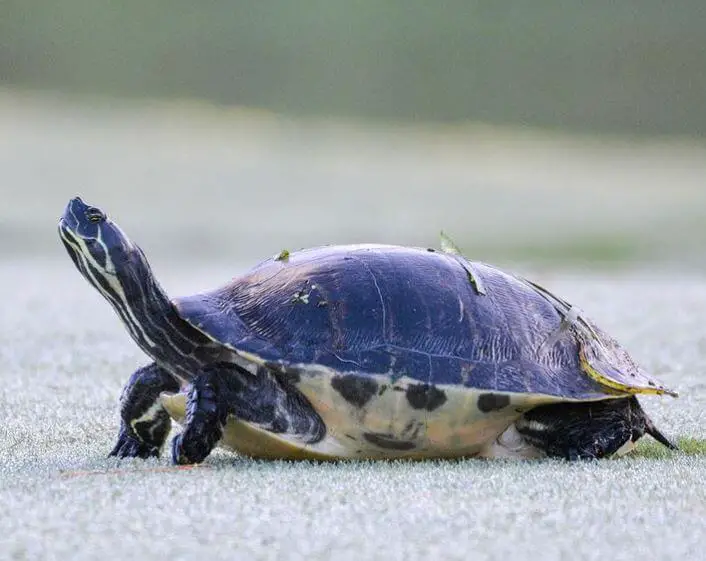
Can You Put Pebbles in a Turtle Tank?
Most people do not know if they can or cannot put pebbles in a turtle tank.
I think that it is very important to understand why you should not use rocks as substrate, especially for aquatic turtles since their food and waste will be on the rocks.
The first reason why you should not use rocks is that rocks are too large for a young turtle’s shell.
Rocks make it difficult for the shell to grow normally, which leads to abnormal shells later in life.
This makes it harder for a pet store employee to inspect your purchase and make sure that there are no structural problems with the shell.
If there are, then the pet store must report this defect so that you can bring your turtle back to them without any problem (the company could be sued for selling a defective product).
Another reason why you should not use rocks is that they can harbor harmful bacteria, which will make your pet sick.
If the rocks are too large to be digested, then they will become impacted in the turtle’s intestines and could even cut through their intestinal tract causing death.
If the rocks are too small, then they may cause impaction of the bowels if swallowed with food or infection if there are cysts on them that contain bacteria.
Finally, most turtles do not have any cravings for eating pebbles so they might accidentally eat one or two while hunting down bugs or plants that you put into their tank.
The rock may get stuck in its digestive tract and it would need surgery to remove the rock.
Even if the turtle does not eat rocks, it still may ingest its own waste, and that could lead to a bacterial infection in the intestinal tract, which would make your pet sick and sometimes even kill it.
Turtles like to scoot on their bellies and some turtles (especially softshell) will leave the shell bare and exposed while eating and when they are being cleaned, so you have to be careful with what is in the tank or you could get injured.
You should use fine gravel or large river pebbles for an aquatic turtle’s tank since these items won’t hurt the shell nor can they hurt your pet’s insides.
So pebbles are not a good choice for a substrate, but you do research into what is best for your turtle to make sure you are giving it a healthy home.
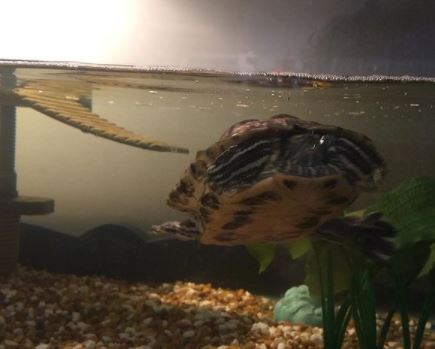
Can You Use Pool Filter Sand for Turtle Tank?
Pet shops are selling pool filter sand for reptiles.
It is also being used by the Turtles Unlimited Foundation to tan the turtles, but it does not work! So please do not use this product for your skimmers or filters because it will clog them quickly (source: my experience).
Want to succeed in having soft and clean water without too many extra costs? One can say, “swimming pool filter sand.”
But my story says something different.
Know more about what you get when buying your pet shop’s supply of said material. I’m sure you’ll prefer to buy high-quality substrate like that from CaribSea and others.
Since there’s a strong demand, we’ve heard many stories on Turtle Forum, so it’s good to know more about all this.
The first thing I noticed when visiting a pet shop was the number of turtles they sold.
But these were not aquatic turtles, but rather tortoises. These reptiles should be housed in outdoor areas with prepared ground, so why sell them at pet shops?
Such lack of knowledge by store owners is just one example of what can happen if you don’t do your homework.
The second surprise was that pool filter sand (stuff sold for use as reptile substrate) was being used for building pools!
This means it has silicates, which kill algae and other bacteria that accumulate in the water during the night. It takes out free carbon dioxide (CO2), part of the depletion of oxygen (O2) during daylight.
Result: lower acidity, low pH values, and a good environment for bacteria that produce the chemical oxygen demand (COD).
This is why you see a green-blue tint at night when swimming pools are filled with this sand. But here, we’re talking about healthy turtles in outdoor enclosures!
I’ve been advising against using pool filter sand for years to avoid it leaching into the water because of its high alkalinity, resulting in higher ammonia levels that can then become nitrite later on.
The result is suffocation from lack of oxygen, which causes gasping for air, leading to death.
I don’t advise using this stuff under any circumstances (for turtles), not even for filtration, but rather use the CaribSea substrate, which is similar to sand and digestible by reptiles.
The other product we’ve successfully used is Exo Terra (and other) forest bedding and composts, sold at plant nurseries.
This material holds moisture well and doesn’t get too dry after a week or so without water, which can cause eye infections in turtles.
While doing various experiments with our aquatic turtle colonies over the past 20 years, we’ve confirmed that pool filter sand for fish tanks does not work for them either because it contains chlorine-based minerals that change the pH value of your water to 8 or above!
So you can’t use this stuff even if you just want to clean your aquarium’s bottom during water changes.
In aquariums, it’s best to use river sand because there are no chemicals in it from fish farm ponds. No chlorine minerals and the pH value stays between 6 and 7.
But of course, all this depends on what you want for your turtles: a healthy environment with perfect water quality or just a place to show off your pet?
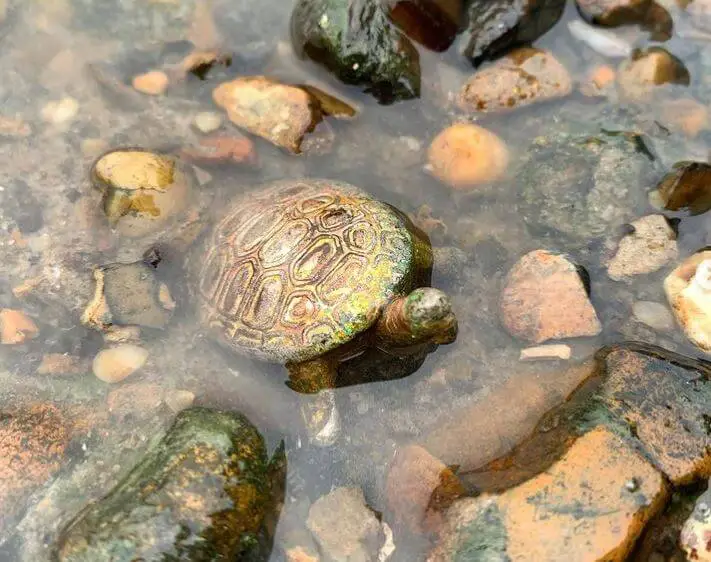
How to Clean Sand in Turtle Tank?
Sand substrate is an increasingly common choice of substrate for aquatic turtles. It’s important to the health of your turtle that the sand in its tank is clean and free of contaminants.
Here are some tips on how to get sand in a turtle tank clean.
- Take out any rocks, decorations, or other objects from the tank.
- Using hot water, thoroughly rinse all sand under the faucet until there are no more small particles coming off (usually, this takes several washes).
- Thoroughly wash out your plastic filter media if you have a filter on your turtle tank (and only if you have a filter on your turtle tank). Wash it inside and outside with hot water.
- Any trapped sand particles will damage the impeller and lower the filtration of your turtle tank.
- Fill up a bucket with hot water, add some dishwashing soap, and wash down all parts of your turtle tank inside and out (including rocks/decorations that you’ve recently removed).
- Thoroughly rinse off any soap residue.
- Neatly arrange your clean rocks/decorations on top of some towels or newspaper. Make sure there is adequate room around them for easy access when it’s time to put them back in the tank.
What Are the Large Rocks for Turtles Found in Takana Beach?
Construction workers have unearthed a huge amount of rounded stones estimated to be about 100 million years old near the entrance of a coal mine in Kamikawa Town, Hokkaido.
The stone is believed to have been used as an “anvil” for pounding out the skins from dead turtles at Japan’s unique traditional turtle-skin tannery during the Edo Period (1603-1867).
This area was one of many places where people did business related to sea turtles, including hunting and selling them.
Sea turtles were once a popular food item among local people living along the Sea of Japan coast. Perhaps it would be more correct to say that the region was a production center for turtle skins.
1 big stone found by construction workers and 2 round stones about 50cm in diameter and 5cm thick were unearthed at the Kamikawa mining site located on Takana Beach, Shiranuka Town.
A part of each stone is protruding from the sand, giving it a human-like look. The area is where people once engaged in hunting sea turtles during the Edo Period.
Strolling along that sand, one can easily imagine how people put skinned turtles on either side of those rocks to dry their meat after removing their flesh.
Kneeling down beside them, you will see “seizures” left where turtle meat used to be placed for sun-drying or smoking.
The hundreds of rocks scattered around the site are reminders that this was once a location where countless turtles were processed.
The Yomiuri Shimbun arranged for geologists to study the rounded stones, which are believed to be anvils used when tanning turtle skins.
At those times, people typically dried and smoked meat from dead turtles before peeling off their skin on seashores. They then rubbed some oil into the leather after pounding it with “anvils.”
Scars remained on those stones as evidence of how they were actually used more than 100 years ago.
Yukio Ishikawa, 69, who is in charge of archaeological research at Iwate University, said he believes the large blocks have been brought from the Sea of Japan coast.
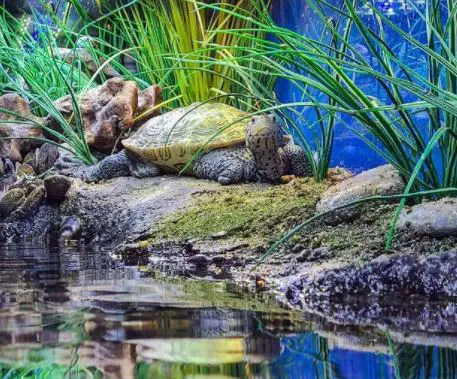
Conclusion
Can you put sand in a turtle tank?
Most experts agree that sand is not a suitable substrate for turtle tanks because it will cause the tank to become dirty and there are better options available.
However, some people do use sand in their turtles’ habitats with success by using filter systems or frequent water changes.
If you decide to try this at home, be sure to monitor your pet’s health closely after making these adjustments.
It can take up to six weeks before your turtle adjusts fully to new habitat conditions, so keep an eye out for any signs of distress during this period.
Key points on whether you can put sand in your turtle tank:
Adding sand to your turtle’s tank can create a more natural and appealing habitat, but it’s essential to be cautious and well-informed when considering this substrate. Sand can be used in turtle enclosures, but there are several important factors to keep in mind. Here are key points to consider when using sand in your turtle’s tank:
1. Species Variation:
- Different turtle species have different habitat preferences.
- Some turtles are more adapted to sandy or aquatic substrates, while others prefer a mix of land and water.
2. Safety Concerns:
- Sand can pose safety risks to turtles, especially hatchlings or smaller species.
- Ingesting sand can lead to impaction or intestinal blockages, which are serious health issues.
3. Size and Age:
- Consider the size and age of your turtle.
- Smaller, younger turtles are at greater risk of ingesting sand, so extra precautions are necessary.
4. Top Layer vs. Substrate Depth:
- Sand can be used as a top layer in the basking area or to create a natural appearance.
- Avoid using sand as the primary substrate in aquatic setups, as it can cause water cloudiness and filtration issues.
5. Safety Measures:
- To minimize the risk of impaction, you can provide larger-grain or coarser sand, which is less likely to be ingested.
- Regularly inspect the sand for any debris or waste that may be harmful if ingested.
6. Cleanliness:
- Keep the sand clean and free of waste, uneaten food, and any organic matter.
- This reduces the risk of bacterial growth and odor.
7. Health Monitoring:
- Vigilantly observe your turtle’s behavior and health to detect any signs of sand ingestion.
- Symptoms may include reduced appetite, lethargy, or changes in bowel movements.
8. Alternative Substrates:
- Consider alternatives like coconut coir, cypress mulch, or reptile-safe carpet for the enclosure’s main substrate.
- These options reduce the risk of impaction while maintaining a natural appearance.
9. Basking Area:
- If you choose to use sand, it’s best placed in the basking area, where the turtle can climb out of the water to rest and regulate its body temperature.
10. Mixing Substrates:
- Combining sand with other substrates can provide a more diverse and engaging habitat while minimizing potential risks.
11. Enclosure Maintenance:
- Regularly clean and maintain the enclosure to prevent the accumulation of waste and debris in the sand.
12. Reptile-Friendly Sand:
- If you decide to use sand, select reptile-specific sand designed to be safe and dust-free.
- Avoid using regular playground or construction sand, which may have sharp particles or impurities.
In summary, you can use sand in your turtle’s tank, but it must be done carefully and with consideration of your turtle’s species, size, and age. The risk of impaction is a primary concern, so it’s crucial to monitor your turtle’s health and maintain cleanliness in the enclosure. Alternatives like coconut coir, cypress mulch, or reptile-safe carpet offer safer options for substrate while still providing a natural and enriching environment for your pet turtle.
Further Reading:
- 7 Best Plants for Turtle Tank
- 5 Best Turtle Basking Platforms
- Can I Use a Fish Water Conditioner for Turtles?
- Can You Put Fake Plants in a Turtle Tank?
- Can I Keep My Turtle Tank Outside?

